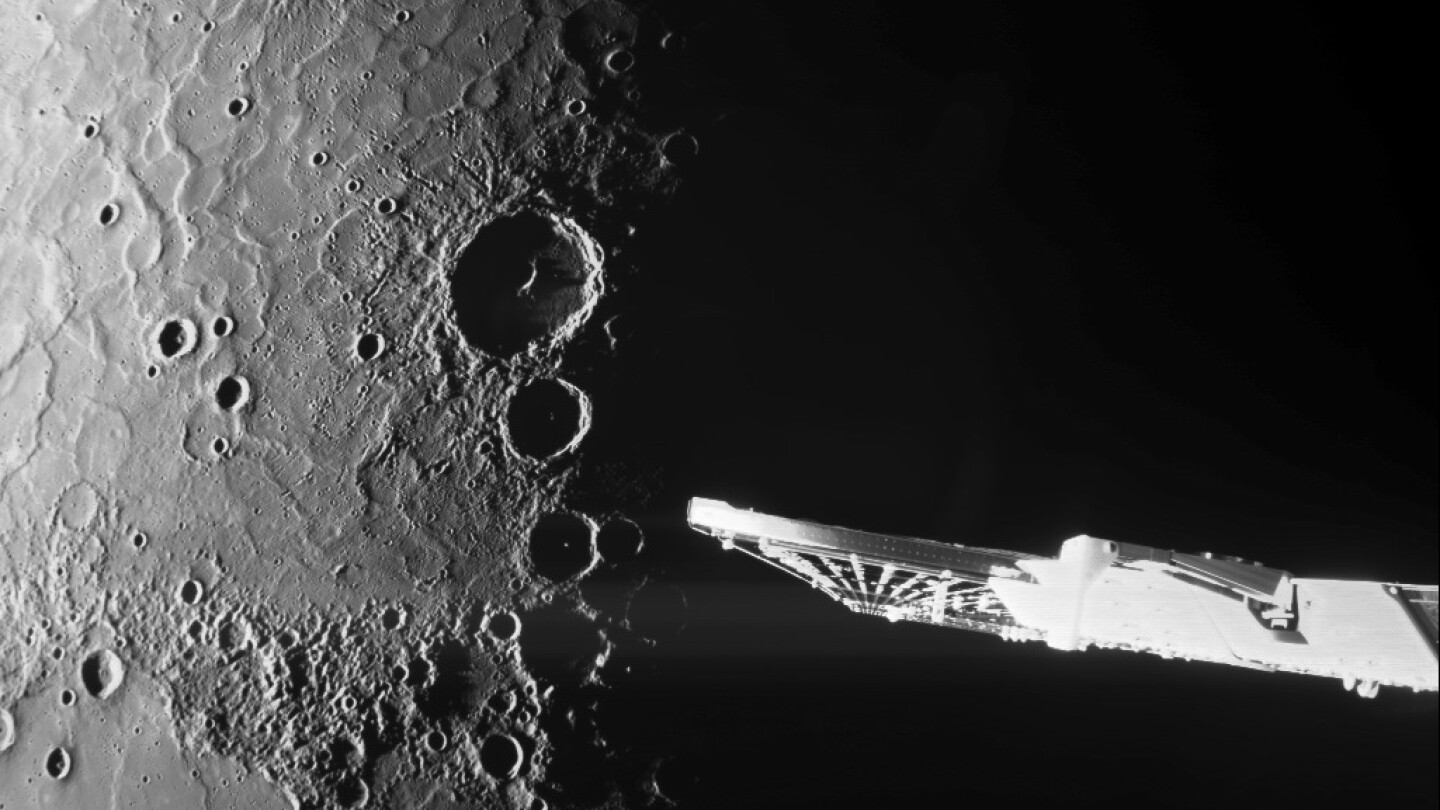Science
Spacecraft buzzes Mercury’s north pole and beams back stunning photos

Introduction to the BepiColombo Mission
The BepiColombo spacecraft, a collaborative venture between European and Japanese space agencies, has achieved a remarkable milestone in space exploration by capturing stunning close-up images of Mercury’s north pole. This joint mission, launched in 2018, has once again demonstrated the power of international cooperation in advancing our understanding of the cosmos. The spacecraft’s recent flyby brought it as close as 183 miles above Mercury’s night side, providing unprecedented views of the planet’s surface.
A Glimpse into Mercury’s Hidden Wonders
During its flyby, BepiColombo focused on Mercury’s north pole, revealing permanently shadowed craters that remain in eternal darkness. These craters are intriguing to scientists as they are believed to harbor water ice, surviving in the extreme cold. The spacecraft also captured the vast expanse of volcanic plains and the enormous impact crater, measuring over 930 miles in diameter. This crater, a testament to Mercury’s violent history, is a significant geological feature that provides insights into the planet’s past.
The Final Flyby and Future Orbit
The recent flyby marked the sixth and final approach of BepiColombo to Mercury, a crucial step in preparing for its orbit. Each flyby has been a strategic maneuver, adjusting the spacecraft’s trajectory for a successful orbital insertion scheduled for late 2024. Once in orbit, BepiColombo will deploy two orbiters—European and Japanese—to study Mercury’s polar regions extensively, offering fresh perspectives on the planet’s composition and environment.
Honoring a Pioneer in Space Exploration
The spacecraft’s namesake, Giuseppe Colombo, was a pivotal figure in space exploration. His contributions to NASA’s Mariner 10 mission in the 1970s, the first to visit Mercury, and later to tethered satellite projects on the Space Shuttle, underscore his enduring legacy. BepiColombo stands as a tribute to his work, continuing the exploration he helped initiate decades ago.
The Importance of the Mission
The BepiColombo mission is not just about capturing images; it’s about expanding our knowledge of Mercury and the solar system. By studying the permanently shadowed regions and geological features, scientists gain insights into Mercury’s history, potential resources, and the effects of solar wind. This mission paves the way for future explorations, inspiring new generations of space enthusiasts and researchers.
Support and Implications
The success of the BepiColombo mission is also a testament to the support from organizations like the Howard Hughes Medical Institute and the Robert Wood Johnson Foundation. Their funding highlights the value placed on scientific exploration and its dissemination to the public. As BepiColombo prepares to orbit Mercury, it represents not just technological achievement but a step forward in our collective journey to understand the universe. The findings from this mission will undoubtedly resonate in the scientific community and beyond, inspiring future endeavors in space exploration.











